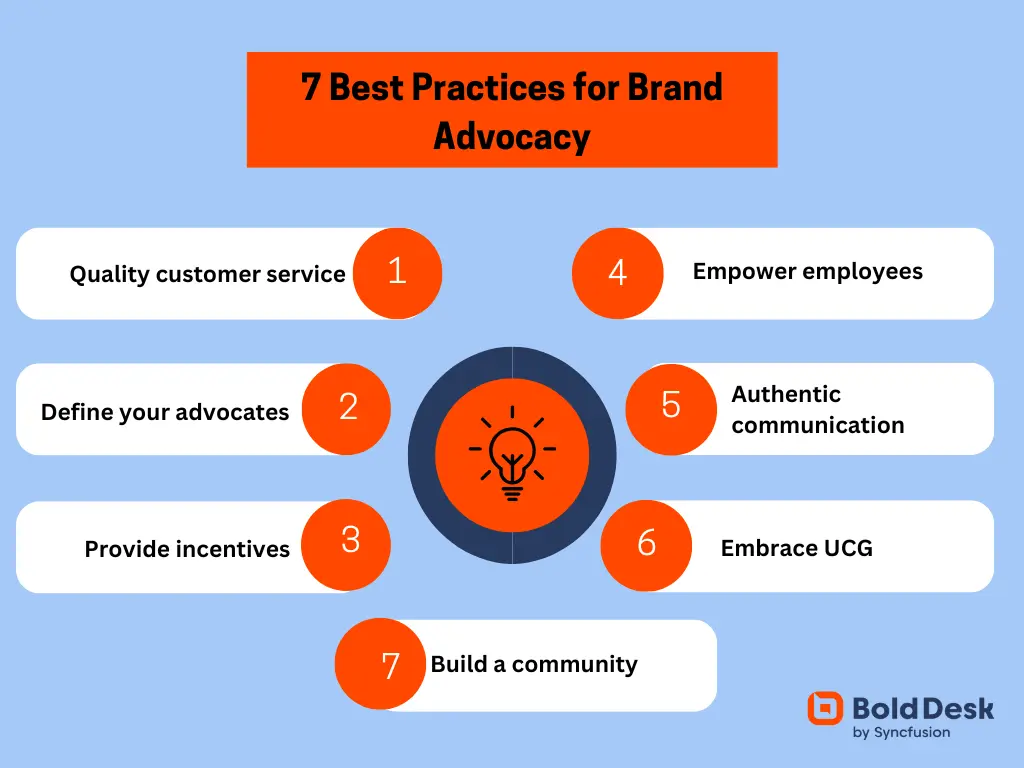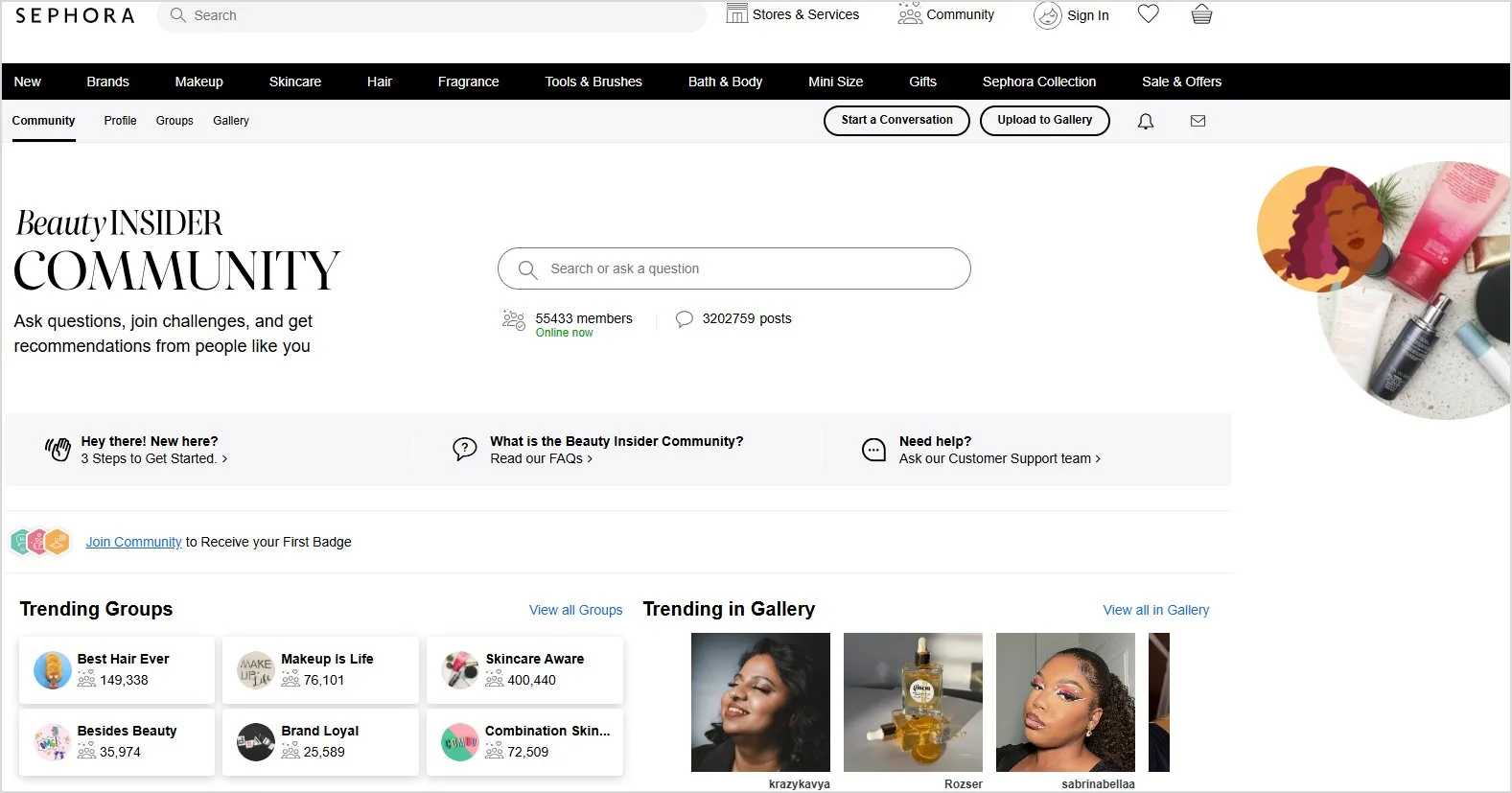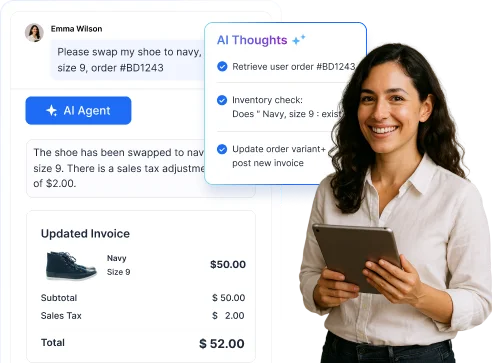You know that feeling when you can’t help it but share something amazing with your friends? Maybe it’s that hidden café with the best coffee in town or a book that completely changed your perspective.
That is the magic of brand advocacy. It is like having a friend who won’t just stop talking about how great something is, not because they are paid to do so, but because they genuinely love it.
According to McKinsey, word-of-mouth influences 20% to 50% of all purchasing decisions.
Whether it’s a heartfelt recommendation from an employee, an enthusiastic post from a friend on social media, or even a passionate review from a stranger online, these genuine expressions can inspire others to choose and stay loyal to your brand.
In this blog, we’ll uncover the secrets behind brand advocacy, explore its key benefits, and strategies that can help elevate your brand to the next level.
What is brand advocacy?
Brand advocacy refers to when individuals actively promote and support a brand because they love its products, services, or values.
Advocating for brand often involves voluntarily spreading positive word-of-mouth, both online and offline and influencing others to engage with or buy from the brand.
But who can be a brand advocate? Literally anyone, including loyal customers, employees, industry influencers or even everyday consumers.
Difference between brand advocacy and customer advocacy
Brand advocacy and customer advocacy are two related concepts that focus on promoting a brand, but they differ in scope and participants.
- Brand advocacy is when any individual actively promotes and supports a brand.
- Customer advocacy involves satisfied clients who voluntarily recommend a brand based on their personal experience.
Types of brand advocacy
Brand advocates come from various groups, each contributing to the credibility and success of a company.
Understanding their roles allows businesses to engage and empower them more effectively.
Below are the different kinds of brand advocacy.

Customer brand advocacy
Customers who are genuinely happy with their experiences with your brand become your loudest cheerleaders. Ask yourself:
- Who is always liking, sharing, or commenting on your posts?
- Who is leaving positive reviews or recommending your products to friends and family?
- Who gives you top ratings without being asked?
These are your customer brand advocates, individuals who are motivated spread the word because of the memorable experiences and genuine value you provide.
Focusing on customer advocacy helps turn satisfied customers into powerful promoters of your brand.
Employee brand advocacy
Having employees feel proud to work for your brand is like hitting a jackpot.
Employee brand advocates usually.
- Provide feedback to helps improve product or service to align with customer needs.
- Share updates and insights about the company on platforms like LinkedIn or Instagram.
- Engage in company events, initiatives or campaigns that go beyond their job duties
When employees feel aligned with the brand’s mission, they naturally advocate for it, which boosts its overall brand reputation and strengthens brand awareness.
Influencer brand advocacy
The ‘influencer effect’ is real: one post from a trusted voice can spark curiosity, drive traffic, and sell out a product overnight.
These influencer brand advocates may promote a brand through writing reviews, representing the brand at conferences, or participating in branded social media challenges and hashtags.
While many influencers are paid a fee to feature a company’s products or services in their content, others genuinely promote brands they love without expecting compensation.
These authentic voices help businesses reach wider, more targeted audiences and build lasting credibility.
Why is brand advocacy important?
There are many perks that come with embracing brand advocacy. Below are its advantages for your organization.
- Boosts customer retention: Loyal supporters often develop a deeper customer connection and long-term engagement with your brand.
- Cost-effective marketing strategy: Organic promotion from satisfied individuals reduces the need for paid advertisements.
- Increases brand exposure: Delighted clients share their authentic customer experiences with their network, which introduces your brand to new audiences, enhancing its visibility and driving organic traffic.
- Creates a competitive advantage: Organizations that embrace brand advocacy are more likely to attract new clients due to their great brand reputation in the marketplace.
- Enhances credibility: Personal recommendations from brand ambassadors feel more honest and reliable, building trust with potential customers.
7 Effective strategies to build brand advocacy
Building brand advocacy requires more than just offering great products, it’s about fostering deep, authentic connections with your audience.
Here are some best practices to effectively develop and strengthen brand advocacy.

1. Creating connections with exceptional customer service
What makes people truly fall in love with a brand? It’s the unforgettable experiences that make them feel seen and valued. Businesses can create these moments by:
- Responding quickly to support inquiries.
- Resolving customer complaints efficiently.
- Keeping every interaction as seamless as possible.
- Using simple, accessible communication channels such as live chat or email to address customer needs.
Monitoring customer service interactions and collecting feedback regularly ensures that the quality of service stays consistent and improves over time.
2. Define your advocates
Before you can nurture advocates, you must first know who they are. But how can you do this?
Identify customers with a high Net Promoter Scores (NPS), a history of repeat purchases, and consistent positive engagement on your social channels.
Analyzing these traits helps brands to know which clients are the most loyal, engaging, and enthusiastic about their offerings.
Through understanding who these brand advocates are and what motivates them, you can tailor your engagement strategies to deepen their connection with your organization.
3. Offer incentives to reward loyal brand advocates
One loyal voice can echo a thousand. Will your supporters amplify your brand? Providing incentives for brand loyalty is a powerful strategy to motivate your audience to voluntarily promote your brand and deepen their engagement.
Here are some proven ways to incentivize your brand advocates.
- Customers – Offering exclusive perks like discounts and loyalty programs, publicly celebrating their contributions on social media or websites, and sending personalized thank-you notes or branded gifts.
- Employees – Use employee advocacy programs including, bonuses, gift cards, or performance-based rewards. Mentioning employee advocates in newsletters, meetings, or award programs also helps boost morale in your organization.
- Influencers – Paying them for sponsored posts, offering free products or early releases and granting exclusive early access to new products.
Identify your most dedicated supporters and create incentives that connect with them and are tailored to their liking, this will keep them engaged and motivated.
4. Utilize employees influence to strengthen brand visibility
Employees are your most credible voices. When empowered and proud, they don’t just work for you, they speak on your behalf.
According to LinkedIn, organizations with a successful employee advocacy program are 58% more likely to attract more clients and 20% very much likely to retain existing ones.
It’s about:
- Equipping your customer support team with the necessary tools, training, and confidence to represent your brand authentically across channels.
- Recognizing employee advocates with rewards, pay raise or public praise.
- Foster a supportive culture where employees feel safe to advocate in their own voice.
This internal empowerment cultivates a strong bond, transforming your workforce into a credible, trusted presence that reinforces the brand wherever they go.
5. Enhance trust through authentic communication
What if your brand was the friend everyone trusts and recommends? Engaging in authentic conversations and creating a personalized customer experience gives clients a sense of belonging.
According to Alteragents, 81% of consumers reveal that organizations that embrace authentic connections will have customers drawn to their business
Brands can do this by sharing real customer stories behind the company, responding thoughtfully to comments or questions, sharing updates on social media and avoiding overly scripted or promotional language.
Encouraging two-way dialogue allows customers to feel involved and heard.
6. Build a community around shared value
People don’t just connect with brands; they connect with the ideals it represents. Having a group of individuals who share a common purpose creates a sense of belonging that deepens emotional ties and trust.
Clearly defining your core values, whether its sustainability or inclusivity and creating spaces for engagement, brands can cultivate authentic customer relations that go beyond transactions.
Encouraging participation and collaboration within these brand communities turns members into passionate brand advocates who amplify your message authentically.
7. Fostering user-generated content (UGC) to boost engagement
User-generated content (UGC) is any form of content created and shared by customers, such as reviews, photos, videos, or testimonials rather than brands themselves. This UGC is often more relatable and believable to potential clients.
According to Speakup, 76% of individuals usually trust the content shared by other people instead of the ones from companies.
Brands can encourage consumer content through hosting contests, inviting customer reviews, featuring user posts on their page and engaging with users, either by liking or commenting on their posts.
Showcase user generated content, whether it’s a heartfelt testimonial or a creative post can increase the customer value and motivate others to join in.
How to measure the success of brand advocacy
Measuring the success of brand advocacy involves a combination of quantitative and qualitative customer service metrics. Here’s how to effectively assess the impact of your brand advocacy efforts.
- Engagement metrics – Track likes, shares, comments, mentions, and clicks social media posts shared by different brand advocates.
- Referral tracking – Use referral program links and promo codes to see how brand advocate efforts drive website visits.
- Net Promoter Score (NPS) – Conduct surveys to assess how likely customers are to recommend your brand to others. You can use a free NPS Calculator to determine your current score and benchmark your brand advocacy performance.
- User-generated content analysis – Monitor the volume and sentiment of reviews, testimonials, and social media posts.
- Social listening tools – Analyze brand mentions, hashtags, and conversation trends across online platforms.
Consistently collecting and analyzing this data can assist you to evaluate the impact of your brand advocacy program and refine your brand strategies.
Examples of successful brand advocate programs
Successful companies understand that active support from their loyal customers can have a strong, and widespread impact.
Here are some examples of companies that have successfully used the enthusiastic backing of their customers to achieve long-term success.
Nike
As a popular sportswear, Nike fosters a sense of community by inspiring individuals to share their personal stories of perseverance and achievement through engaging campaigns and social media.
These shared stories transform customers into passionate advocates, celebrating their journeys and connecting with others who resonate with Nike’s core values.

Sephora
A well-known beauty store, Sephora has created the beauty insider community to help customers share their beauty tips, reviews, and makeup looks.

Sephora also runs fun challenges and events, like tutorials and product trials. These activities deepen customer connection, naturally inspiring genuine endorsements and recommendations.
Coca-Cola
As a popular beverage brand, Coca-Cola’s “Share a Coke” marketing campaign has personalized bottles with individual names, encouraging consumers to find and share their favourite bottles with friends and family.

This simple yet powerful initiative transformed consumers into active advocates, who shared their experiences and stories associated with the personalized bottles.
Brand advocacy: Turning engagement into influence
Your brand’s most influential voice is not your own, it comes from those who vouch for it. This could be customers, employees, influencers, or other brand advocates.
Brand advocacy thrives when these supporters believe in a brand’s mission and share their authentic experiences, creating a ripple effect of trust and influence.
With a powerful help desk system like BoldDesk, businesses can deliver personalized, efficient support through AI, self-service tools, and streamlined ticket management.
These positive service experiences build trust and satisfaction which are key to converting happy customers into loyal brand advocates. For additional support, reach out to the BoldDesk support team.
Was this blog insightful? We’d love to hear your thoughts! Share your ideas and experiences on effective brand advocacy techniques in the comments below. We highly value your feedback.
Related articles



















 Email Ticketing System
Email Ticketing System Shared Inbox Software
Shared Inbox Software Multi Brand Help Desk
Multi Brand Help Desk Internal Help Desk Software
Internal Help Desk Software Trouble Ticketing Software
Trouble Ticketing Software Mobile Help Desk
Mobile Help Desk 
















